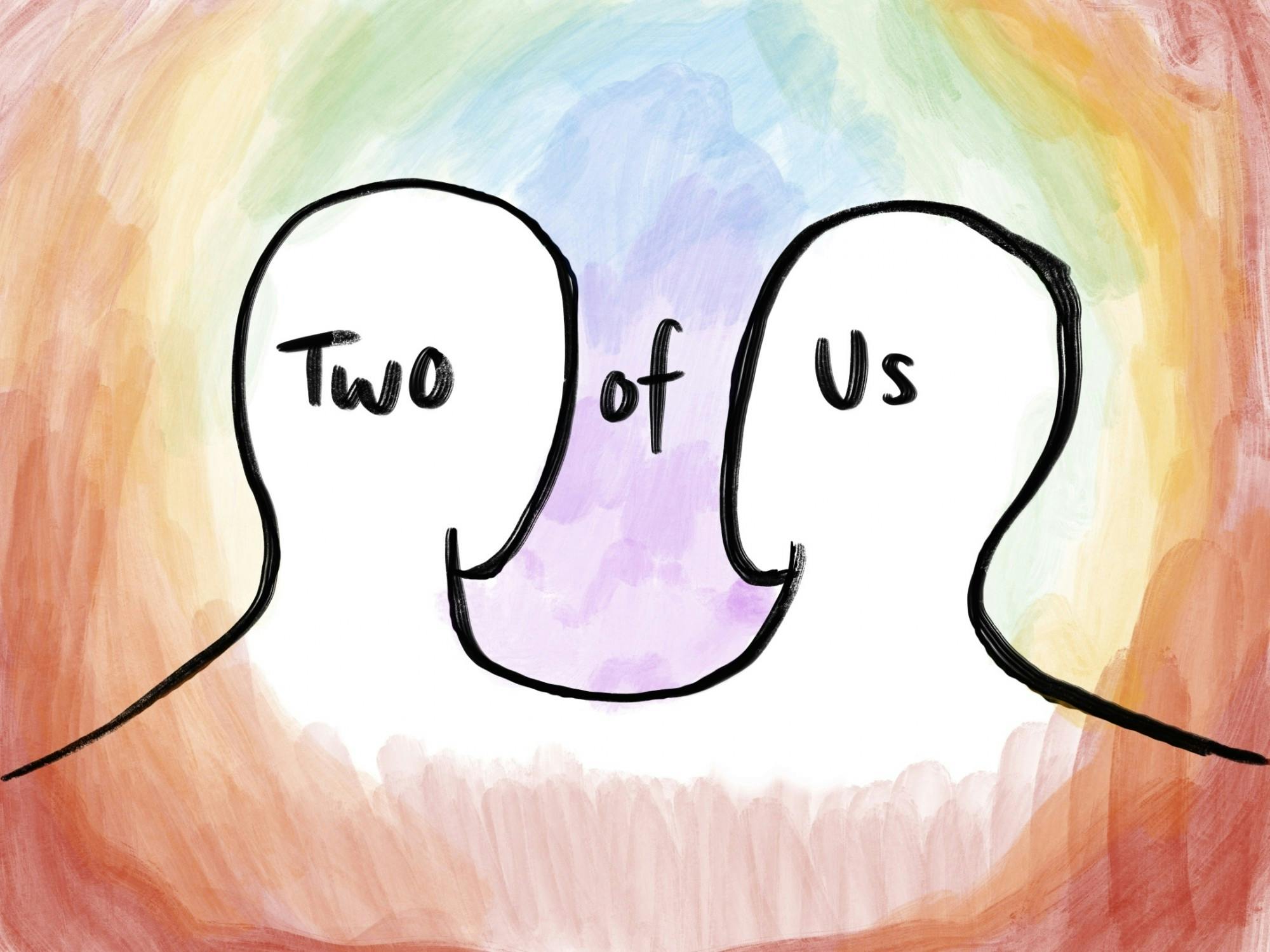“Two of Us,” a French film directed by Filippo Meneghetti, feels at first like a simple love story. However, the film quickly evolves into a complex portrait of queer love, familial distance and loss. Meneghetti’s debut film is a harrowing yet stunning exploration of what it means to love in secret.
Nina (Barbara Sukowa) and Madeleine (Martine Chevallier) have shared an inextricable bond for decades. Madeleine, affectionately nicknamed “Mado,” married a man and built a family, but she never strayed in her loyalty to Nina. After the death of Madeleine’s husband, she and Nina remained quietly and passionately in love, all while appearing to the world around them as mere neighbors.
As Nina and Madeleine make plans to move to Rome and live their lives openly, Madeleine grapples with the right way to come out to her adult children. When she can’t do it, the two women are thrown into conflict, and tragedy strikes before they’ve had the chance to resolve it — Madeleine has a stroke, leaving her unable to speak or care for herself. Nina is forced to find ways to maintain connection to Madeleine under the looming presence of Madeleine’s daughter, going to great lengths to spend short, aching moments together.
It’s unsettling to watch Nina appear as an intruder in her attempts to hold onto Madeleine — who has effectively receded into her own world. She moves silently, stealing moments with Madeleine outside of the watchful eye of Madeleine’s daughter. This creates a suffocating tension that sits in the pit of the viewer’s stomach. It’s impossible not to stay with these women, watching and waiting for the truth to come forth.
In terms of direction, “Two of Us” excels. The story progresses through a series of moments as long pauses interrupt short sequences of dialogue — an empty bench, a kitten alone in a hallway, a broken window. Even in the absence of dialogue, the film manages to evoke a panoply of emotions through an artful portrayal of people and the environment they occupy. Each scene conveys to viewers the heartache and passion of Nina and Madeleine’s persistent efforts to be together.
The French drama is thick with silence; Meneghetti lets the sizzling of burnt food and shuffling of muffled footsteps speak for the characters. These quotidien scenes replace typical dramatic, dialogue-rich interactions, but still speak volumes.
In the beginning of the film, the stillness is a comfort and lends to the peaceful happiness of Nina and Madeleine’s relationship. Later, though, when silence is forced upon Madeleine, it becomes incredibly unnerving. It is difficult not to compare her earlier inability to come out to her children to her later literal inability to speak. In this sense, the film is quite direct in its representation of the consequences of Madeleine’s secret. The parallels between her voluntary and involuntary silences are interesting, but perhaps a bit blunt in their execution.
Still, we are not meant to judge Madeleine for her fear of coming out. In contrast, it is understood from the beginning that she faces challenging circumstances. Her son carries a grudge against her for her lack of affection toward her late husband, and her daughter appears emotionally reserved and dismissive of her concerns. There is so much distance between Madeleine and her children even as they eat at the same dinner table that the task of confiding in them seems impossible. This moment makes it easy to sympathize with Madeleine, given the extent of what she’s struggling with.
The scene with her children is dimly lit and uncomfortably hushed, forcing us to feel the weight of Madeleine's anxiety alongside her. This is another way the film achieves incredible success — even with limited dialogue, it feels rational that Madeleine should be so afraid to come out to her children. It’s not common for a film to elicit such empathy for characters we barely know, yet “Two of Us” accomplishes just that.
I will admit, I am tired of this commonly used theme in lesbian media — we get glimpses of a happy couple, whether it’s a budding romance or a long-standing love, and then it is abruptly taken away through some gruesome means. The literal silencing of Madeleine through her illness is not just unsettling, but also frustrating. Lesbian voices and stories are difficult to come by, and even more difficult to find with the absence of illness and the looming threat of death. “Two of Us” unfortunately adds another entry to this catalog of films.
What made this story special, though, was its complete disregard for the future. This film was overwhelmingly set in the present; the lack of foreshadowing, direct planning or cohesive resolution forced viewers to take in each moment as it passes. While I was still offput by Madeleine’s tragedy, I did not feel the same helplessness that I have felt for other grim lesbian storylines. There was no time to think about Madeleine’s immobile and mute state, or the long, painful recovery ahead of her. Instead, the film emphasizes a message of hope in Nina’s unrelenting devotion to her lover.
This film is devastating, inspiring and overwhelmingly human. The soft, muted air in each scene is redefined with every passing moment, a breathtaking way to reflect feelings of comfort, peace, fear and insecurity. I did feel that the sudden voicelessness of a closeted lesbian could have been done with more nuance or subtlety, but the film’s lack of resolution on Madeleine’s condition did some work to make the story stronger and perhaps more optimistic. The bluntness of “Two of Us” may not appeal to everyone, but the profound portrayals of Nina’s unconditional love and Madeleine’s journey to recovery make for an extraordinary film.



